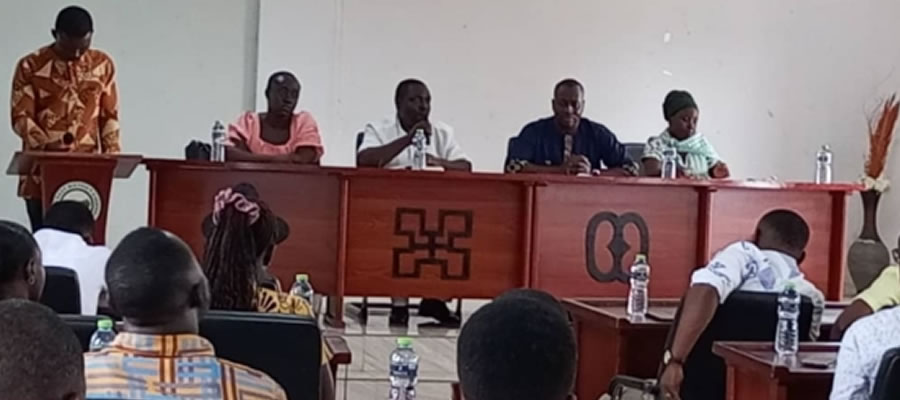

The Atiwa East District Assembly is one of the Districts Assemblies in the Eastern Region of Ghana. The District gained its present status by the Legislative Instrument (LI) 2344 of 2018. It is composed of Sixteen (16) Electoral Areas and further divided into Four (4) Area Councils and Sixteen (16) Unit Committees spread throughout the District.
Composition and Functions of the Assembly
The Assembly which is the highest deliberative, legislative and executive authority in the District is composed of Twenty- four (24) members, made of Sixteen (16) elected and Six (6) appointed by government, One (1) Members of Parliament representing and the District Chief Executive.|
There are Six (6) sub-committees of the Assembly they are Social Services, Works, Finance and Administration, Development Planning, Agriculture and Environment, Justice and Security and Budget. Reports from these sub-committees are submitted to the Executive Committee which is presided over by the District Chief Executive.
Nine (9) out of the statutory eleven (11) decentralized departments that are required by law to be established in the District are in operation. The composition of these departments is outlined in the table below:
• Ghana Education Service
• Social Welfare and Community Dev.
• Works Department
• Physical Planning
• Finance Department
• District Agricultural Department
• District Health Directorate
• National Disaster Organization
• Central Administration
The functions of the Assembly according to the Local Governance Act 2016, Act 936 enjoin districts:
• To implement policies and programmes of the government at the District Assembly
• To pass bye-laws to guide the people to live peacefully in its area of jurisdiction
• To collaborate with the Regional Co-ordinating Council to monitor development programmes and
• To prepare development plans and budgets for the district taking into consideration the priorities in the area.
Sub-District Structures
In line with the objective of achieving complete decentralization, Four (4) Area Councils and a total of Sixteen (16) Unit Committees have been established in the District to deepen grassroots participation in governance. Only one Area Council (Anyinam) has office accommodation. The Assembly has provided them with computers and other office equipment. The District Assembly has also ceded some revenue areas to them for collection and keeps 50% of whatever they collect for their own local development.
The Area Councils still face a lot of challenges and chiefly among them includes office accommodation, inadequate funding and means of transport. These affect the execution of their functions such as resource mobilization, registration of births and deaths, mobilization of communities to undertake local development activities, etc. Measures such as the provision of funding and means of transport, training and logistics are required to make these structures function effectively.
State of Participation of Stakeholders (the Citizenry)
In the context of public participation, a stakeholder can be defined as any person, or group, who has an interest in the project or could be potentially affected by its delivery or outputs. The citizenry including civil society groupings, departments and agencies in the district are offered the opportunity to actively participate in public projects planning and implementation through development communication strategies such as public hearing, stakeholder forums, periodic review meetings and site or walking tours.
However, the communal spirit among the people in most of the communities is fading out hence affecting communal ownership of development projects.
Date Created : 3/28/2019 4:34:23 AM












 facebook
facebook
 twitter
twitter
 Youtube
Youtube
 +233 593 831 280
+233 593 831 280 0800 430 430
0800 430 430 GPS: GE-231-4383
GPS: GE-231-4383 info@ghanadistricts.com
info@ghanadistricts.com Box GP1044, Accra, Ghana
Box GP1044, Accra, Ghana